Bard Class Overview
 Image credit: YouTube
Image credit: YouTube
The Bard is like a "Jack of all trades". They have a variety of skills and can:
• Use support skills,
• Apply debuffs,
• Engage in close combat.
Their abilities make them suitable for both combat and adventures. Their main trait is Charisma, which is used for social checks like persuasion and intimidation. The "Jack of all trades" feature also gives a bonus point to every skill check. Depending on the subclass you choose, you can even build a Bard as a close-combat fighter.
When considering the best Bard race, we suggest High Elf due to its resistance to sleep magic, great night vision, and defensive capabilities. However, everyone can choose what they think is the best Bard race, but we recommend High Elf because of the extra Cantrip slot. This is a BG3 Bard guide that will cover the class's proficiencies, spells, and subclasses.
Bard Class Playstyle
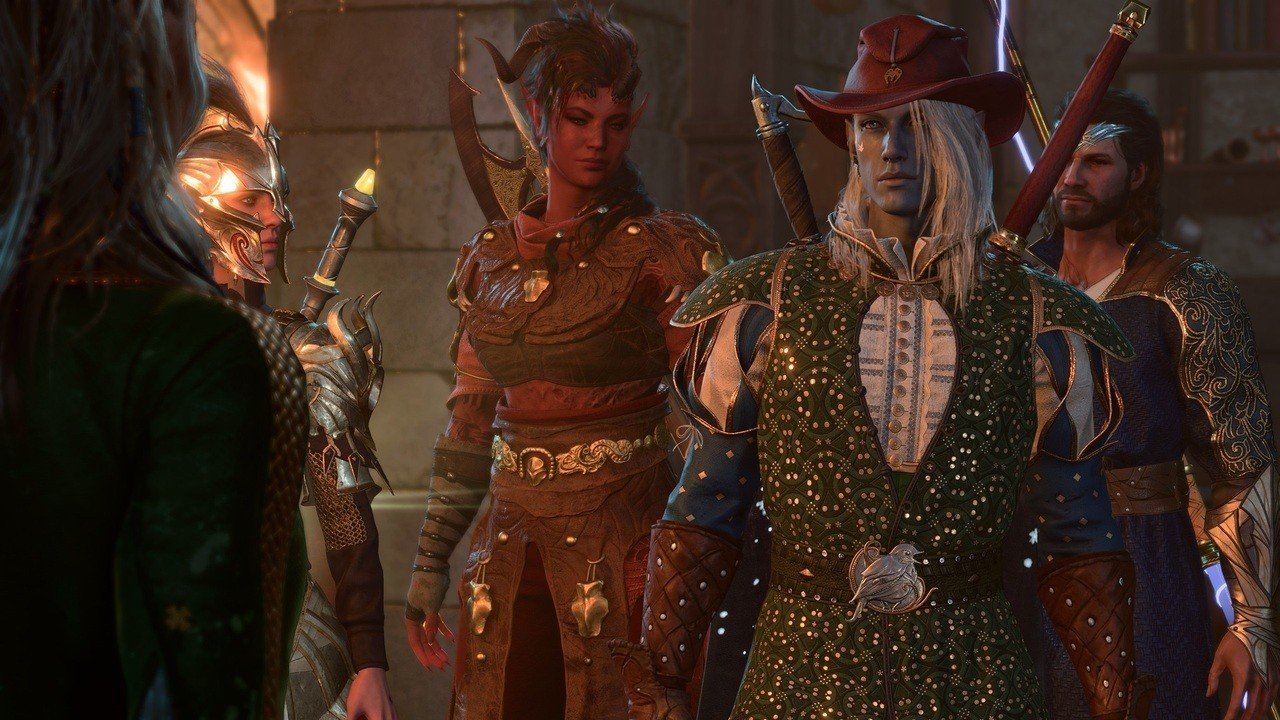 Image credit: YouTube
Image credit: YouTube
In Baldur’s Gate 3, music is essential for the Bard class. Players choose an instrument for their Bard at the start. But in battle, consider them like a Rogue who can cast spells. The Bard mainly uses magic, focusing on skills and supporting the team.
When playing this character, you wouldn't want to be at the front line in battle. Instead, they stay on the sidelines or center, aiding the team with supportive tunes. Bards can also catch enemies off-guard with light weapons. They can adjust their abilities to exploit enemy weaknesses, helping finish battles before things get too challenging for the team.
Bard Class Features
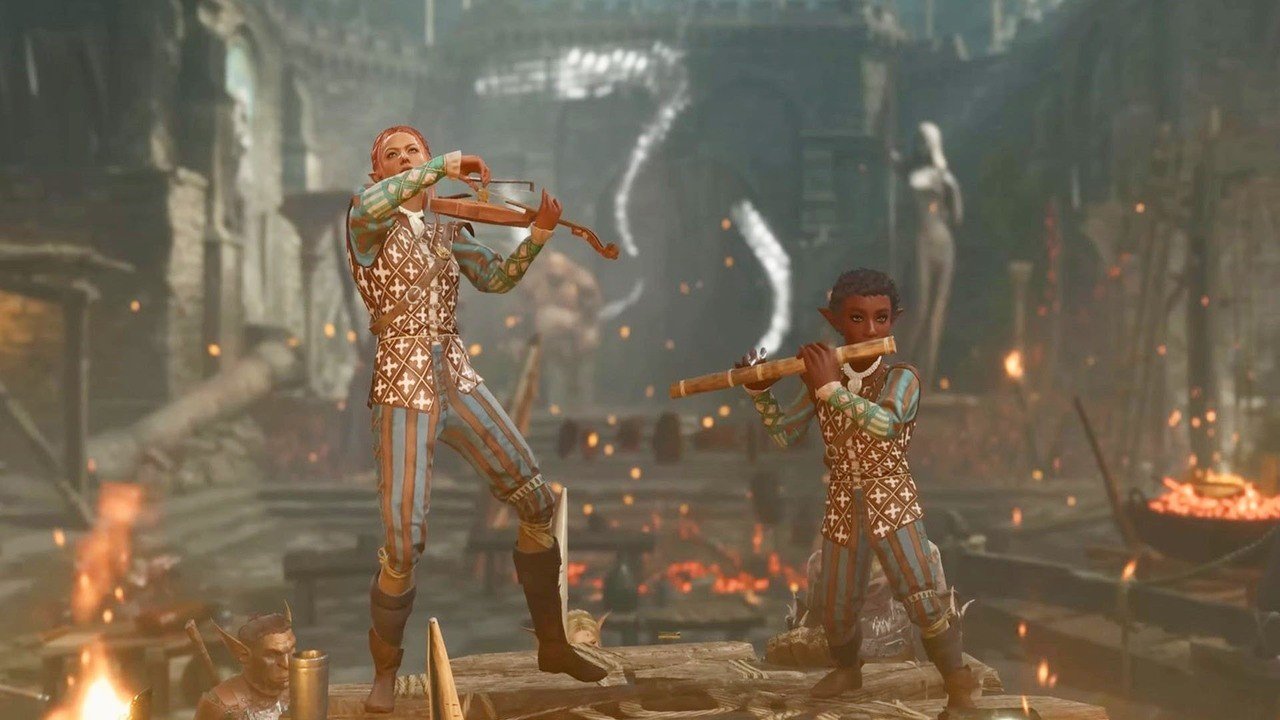 Image credit: clickthis.blog
Image credit: clickthis.blog
So, you've reached the "Bard Class Features" section, where we will delve into all the specifics of this class in our Bard class overview.
Key Abilities: Cha and Dex
This character employs Charisma as their primary ability, enhancing their spellcasting prowess. Bards display heightened agility when wielding Finesse weapons. During combat, the character should be clad in light armor. Bards also have intrinsic Cha and Dex bonuses for saving throws.
Gear Proficiency
Let's explore what a Bard can be proficient in:
• Simple Weapons;
• Hand Crossbows;
• Longswords;
• Shortswords;
• Rapiers;
• Musical Equipment.
Bards are especially proficient with light weapons. However, this class truly shines in spellcasting and performances. If your character is more melee-oriented, Finesse weapons will be apt. Bards can also entertain and captivate audiences with musical instruments—a hallmark feature of the Bard class. Your musical skills can influence the unfolding storyline, especially in Baldur's Gate 3.
Skill Proficiency
During character creation, a Bard can attain proficiency in any three skills. High Charisma enables Bards to articulate persuasively. Skills like Persuasion, Intimidation, and Deception would be valuable picks for players. If you're inclined towards agility over conversation, Sleight of Hand, Stealth, and Acrobatics will be advantageous, especially when the Bard serves more as a Rogue or a dedicated scout.
Bardic Inspiration
 Image credit: bleedingcool.com
Image credit: bleedingcool.com
Bards possess a distinctive trait that sets the class apart—Bardic Inspiration. With their melodies, they can bolster the team, which then gains a bonus to the subsequent Attack Roll, Ability Check, or Saving Throw. As the Bard's level ascends, the conferred buff grows more potent. It's prudent to reserve Bardic Inspiration for pivotal moments or inspire a teammate facing imminent peril.
Bard Spellcasting
Bards can harness a plethora of spells and cantrips. Primarily, these spells cater to support over offense.
Jack of All Trades
The Bard Class Features continue with Jack of All Trades. A Bard can bestow a modest bonus to checks of skills they aren't proficient in.
Song of Rest
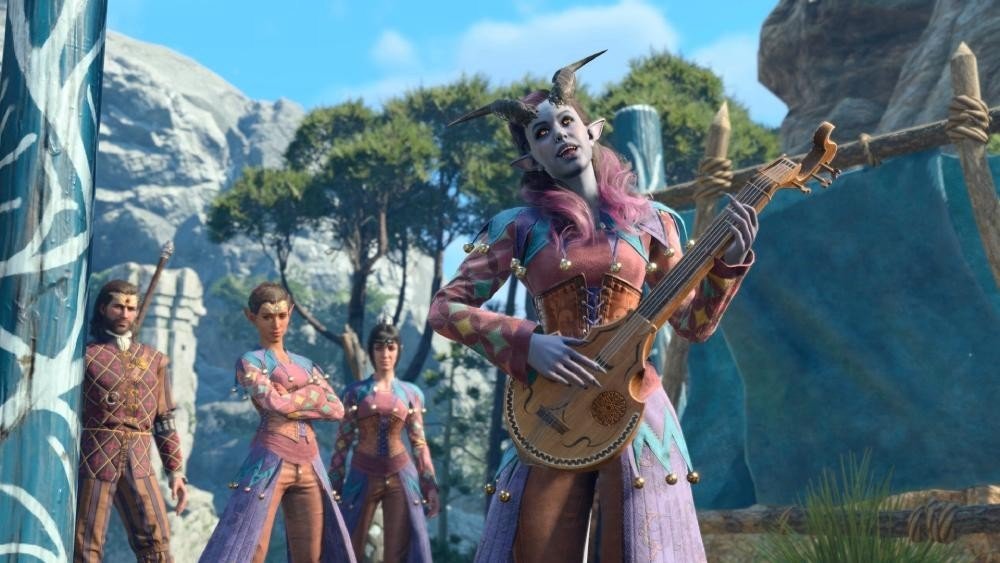 Image credit: YouTube
Image credit: YouTube
Font of Inspiration
Replenishing Bardic Inspiration during short rests.
Expertise
Enhancing any proficiency by doubling skill bonuses.
Countercharm
Shielding teammates from debuffs that alter consciousness. "Countercharm" augments saving throws against fear or charm effects.
Magical Secrets
Bards have the option to adopt spells from other spellcasting classes.
That wraps up all the Bard class features. Let's move on to the next segment of our Bard class overview.
Bard Class Progression
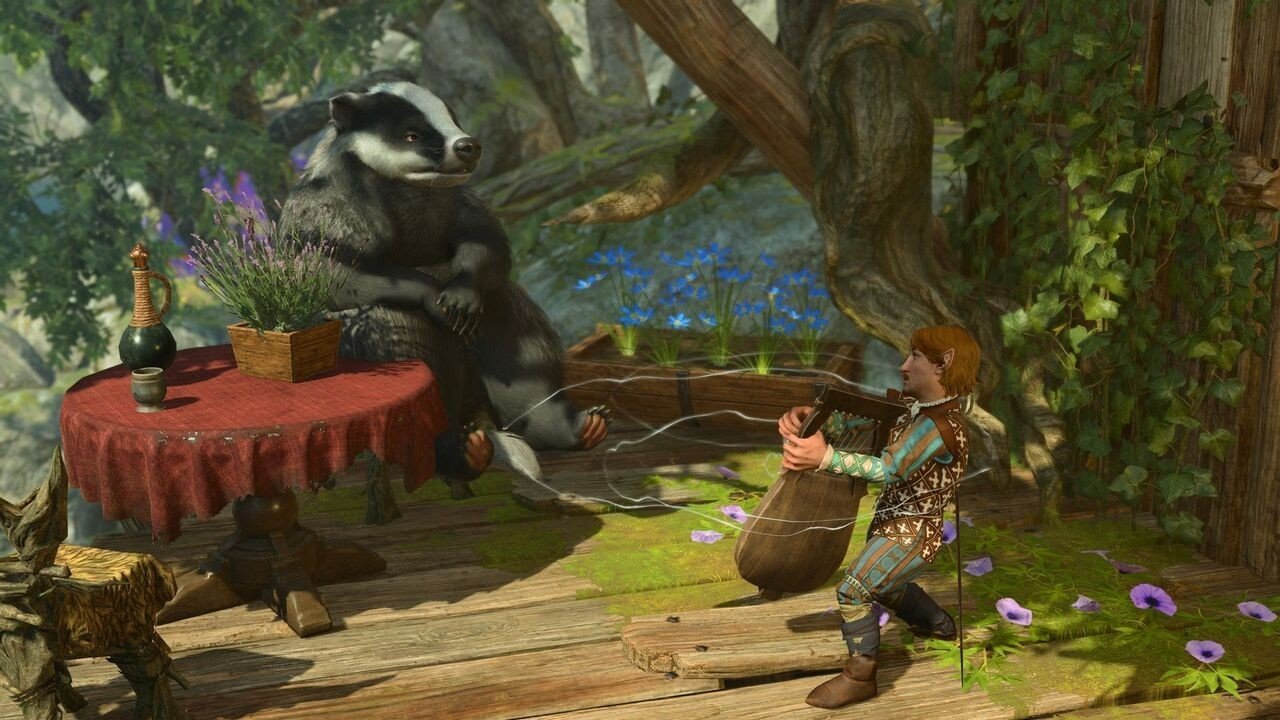 Image credit: x.com
Image credit: x.com
Here you will learn what the Bard class receives as they level up.
Level 1
If you are a Bard and have already reached the first level, the information below is relevant for you.
Bardic Inspiration: Boost an ally’s rolls with a performance.
Bardic Spells:
• 2 Level 1 spell slots;
• 4 spells known.
The player can choose a musical instrument from the provided list.
Level 2
Bardic Spells:
• +1 Level 1 Spell Slot.
Jack of All Trades adds half a bonus to ability checks without proficiency, while Song of Rest rejuvenates the team's strength.
Level 3
Information for players who have leveled their Bard up to the third level.
Available bardic Spells:
• +1 point to spells known;
• 2 Level 2 spell slots.
Subclass Choice: Choose a Bard College so you can continue to study.
Expertise provides a double bonus to skills.
College of Valor: Gear Proficiency: Medium Armor, Shields, Martial Weapons.
College of Valor: Combat Proficiency: strengthens buffs for the team.
College of Lore: Cutting Words: debuffs appear on enemies from the Bard and inspire them.
College of Lore: Skill Proficiency: Arcana, Intimidation, Sleight of Hand
College of Swords: Gear Proficiency: Medium Armor, Scimitar
College of Swords: Fighting Style: choose a combat style with two weapon types
College of Swords: Blade Flourish: you can spend inspiration to make melee attacks multiple times stronger.
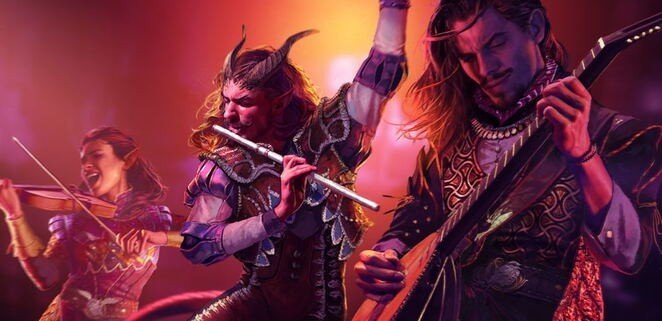 Image credit: neoseeker.com
Image credit: neoseeker.com
Level 4
Transitioning to the description of the Bard at the fourth level. What awaits the player at this stage of the game for this class.
Bardic Spells:
• +1 point to spells known;
• +1 point to Cantrip known.
Feat Selection: choose any feat for the Bard from the provided list. You can settle on any that another class possesses. Alternatively, choose an ability improvement.
Some feat suggestions for gamers playing as a Bard:
• Defensive Duelist: if you have a Finesse weapon in hand, +2 to AC when attacked in melee.
• Mobile: The Bard will move faster on any terrain.
• Magic Initiate: Sorcerer: Learn 2 cantrips, 1 Level 1 spell.
• Magic Initiate: Warlock - Learn 2 cantrips, 1 Level 1 spell.
• Shield Master: +2 to Dex Saving throws when using a Shield. If successful, you won't lose health from the damage taken.
• Skilled: choose 3 skills.
• Tough: add 2 health points for each level.
• Weapon Master: +1 to Str or Dex, gain proficiency with 4 weapons of your choice.
Level 5
We have reached the fifth level in our Bard class overview. What progression awaits the character at this stage of the game.
Bardic Spells:
• +1 point to spells known.
Bardic inspiration becomes improved, enhancing buffs. The inspiration itself replenishes through a short rest, provided by Font of Inspiration.
Level 6
The midpoint of this Bard progression list. At the sixth stage, the Bard class expects:
Bardic Spells:
Countercharm: enhanced defense due to characteristics.
College of Lore: Additional Magical Secrets: choose 2 spells.
College of Valor: Extra Attack: Attack twice per turn.
College of Swords: Extra Attack: Attack twice per turn.
Level 7
We've passed the halfway mark, and now let's see what's available at level seven.
Bardic Spells:
• 1 Level 4 Spell slot;
• +1 point to spells known.
Level 8
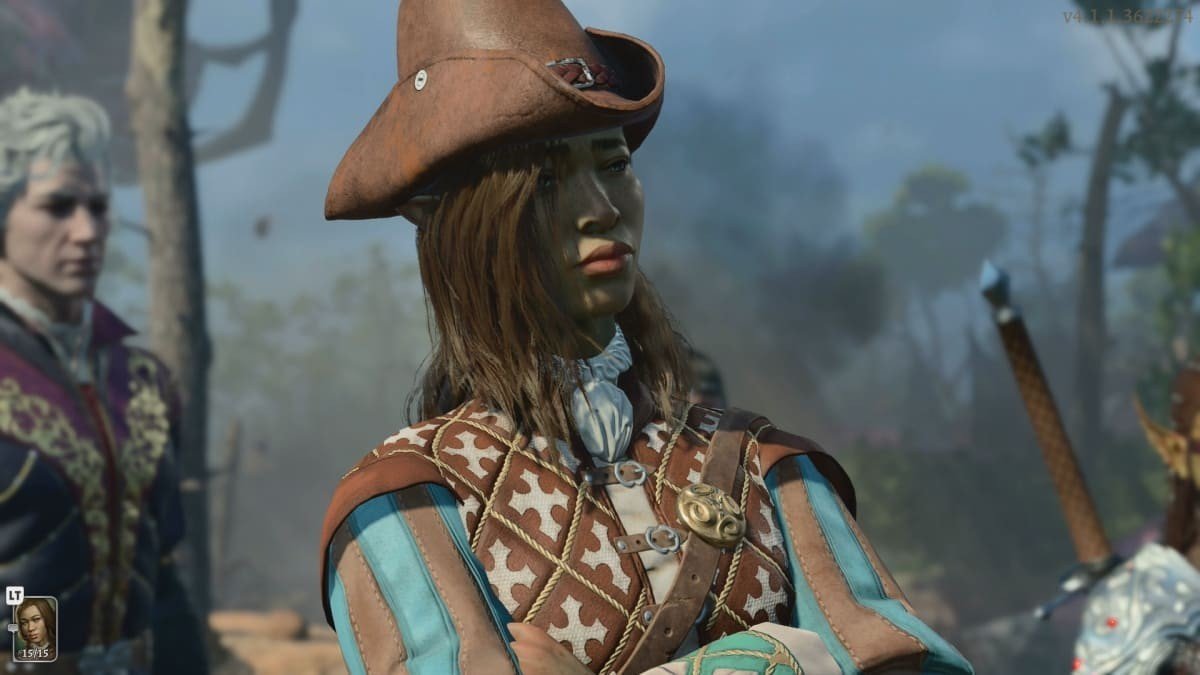 Image credit: tseret.com
Image credit: tseret.com
Moving on to the next level. Available for the Bard of the 8th level:
Bardic Spells:
• +1 point to spells known.
Additionally, players can choose any feat from those available.
Level 9
Bardic Spells:
• +1 point to spells known.
In addition to the above, the Bard receives an upgraded Song of Rest.
Level 10
And now we've reached the tenth level. This is a powerful Bard capable of much.
Bardic Spells:
• +2 spells known;
• +1 point to cantrip known.
Bardic Inspiration gets an upgrade. Expertise once again rewards the player with proficiency bonuses to 2 skills, which you have to choose yourself. You can also select two spells that your Bard will use in the future.
Level 11
Bardic Spells:
• +1 point to spells known.
Level 12
On the final level, you have a choice to make: either take a feat or improve an ability. This wonderful bardic note concludes the character's progression list.
BG3 Bard Subclasses
We've reached the "BG3 Bard Subclasses" section where we'll take a detailed look at each subclass of this character.
College of Lore
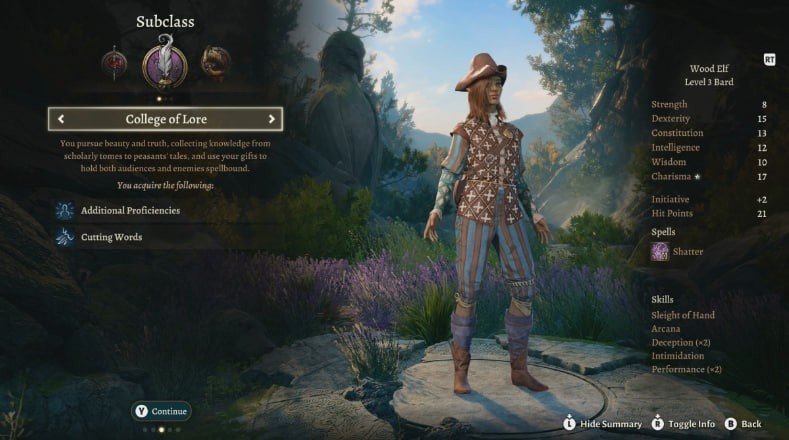 Image credit: windozo.ru
Image credit: windozo.ru
What does the College of Lore subclass entail? It's a Bard who cannot stand to engage in combat and attack. If you've chosen the College of Lore, tactics using spells aimed at slashing and piercing strikes for melee classes would suit you best. Such Bards can also use Cutting Words to harm the enemy.
College of Lore features:
• Cutting Words: here you'll need to think instead of brandishing a weapon, because wit can help the Bard to distract, confuse, and demoralize the enemy. This class might also find Bardic Inspiration useful to apply a debuff to an attack, skill check, or damage roll.
• Additional Magical Secrets: this subclass has an early version of the Bard's Magical Secrets. Using this, the Bard can choose any spell from the list.
College of Valor
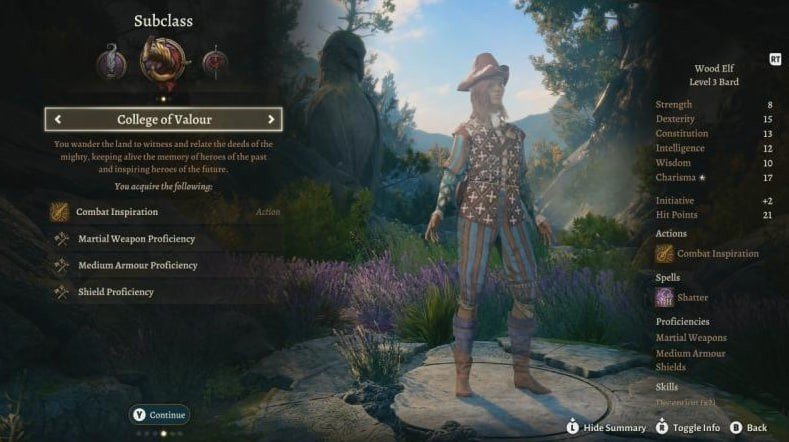 Image credit: windozo.ru
Image credit: windozo.ru
Let's look at the College of Valor subclass. If you choose this subclass, your Bard should focus on watching heroes' feats and joining them in battles. Some benefits of this subclass are an upgraded Bardic Inspiration and a variety of weapons and armor to choose from.
College of Valor features:
• Combat Inspiration: A better Bardic Inspiration to improve damage and defense.
• Extra Attack: This Bard can attack like a fighter, making them great in battles.
College of Swords
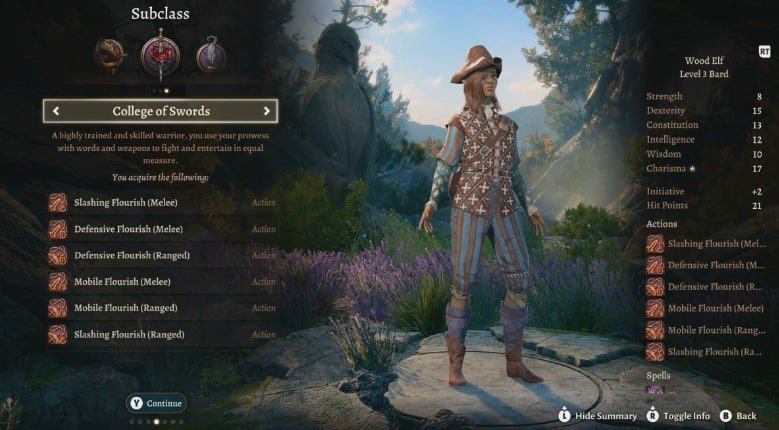 Image credit: superparmeni.eu
Image credit: superparmeni.eu
The College of Swords subclass can be described as a sword-dancing bard. They're often called Blades because they're amazing duelists. Blades use magic with their weapons and have a unique fighting style, making them strong in battles.
College of Swords features:
• Fighting Style: Blades get passive advantages in fights.
• Dueling: Adds extra damage when using a melee weapon and nothing in the second hand.
• Two-Weapon Fighting: Adds damage bonuses for dual-wielding.
• Blade Flourish: Faster movement and special effects.
• Defensive Flourish: Use Bardic Inspiration for extra damage and better defense.
• Slashing Flourish: Deals damage to both a target and a nearby enemy.
• Mobile Flourish: Adds damage and can push the enemy away.
• Extra Attack: Gets an additional attack.
Bard Class Build Recommendation
 Image credit: YouTube
Image credit: YouTube
If you want a strong and useful Bard, wear light weapons and armor. Even though some subclasses improve close combat, Bards aren't really meant for frontline fighting. Keep them away from direct combat. It's also good to have a shield for added defense and a crossbow for ranged attacks while teammates handle close combat.
Conclusion
That's the end of our guide. Remember, this isn't a detailed BG3 Bard build, but we tried to cover all key information. We told about all the best Bard subclasses, character progression, abilities, every skill, and proficiencies. We hope this best Bard class overview helps you in Baldur’s Gate 3.
Main image: forum.gamer.com.tw


 Irina "Zemlia" Sukhanova
Irina "Zemlia" Sukhanova












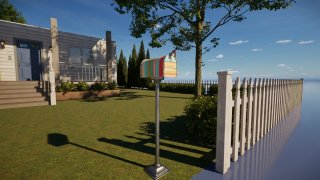





0 comments